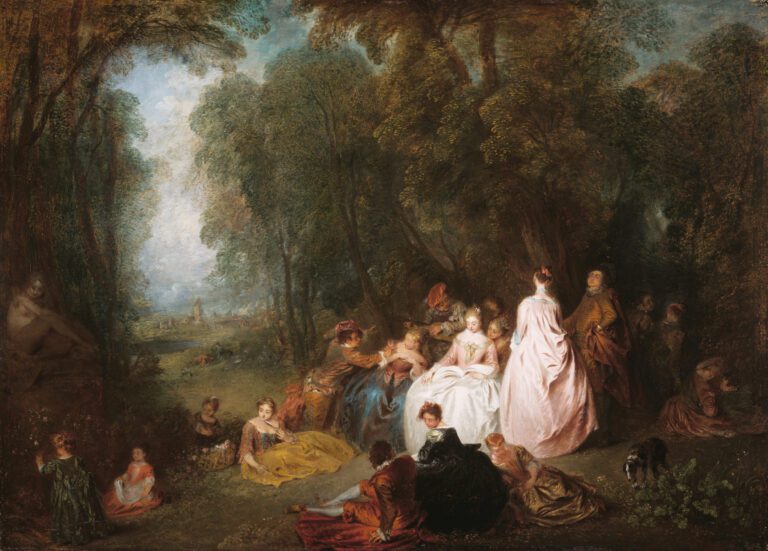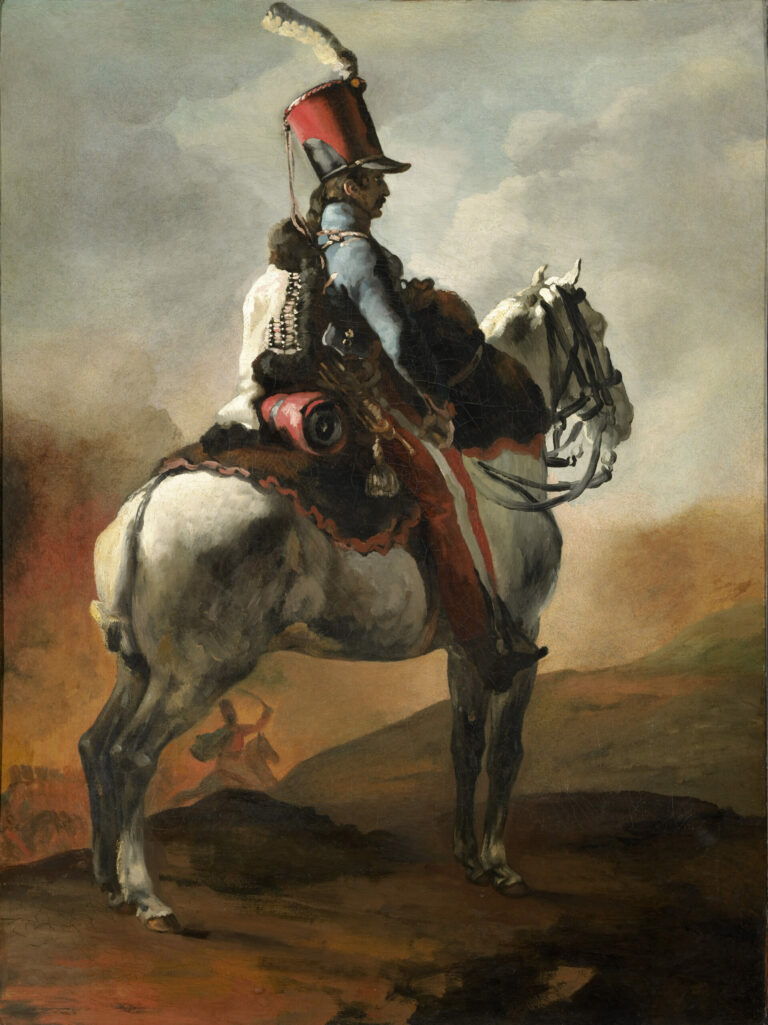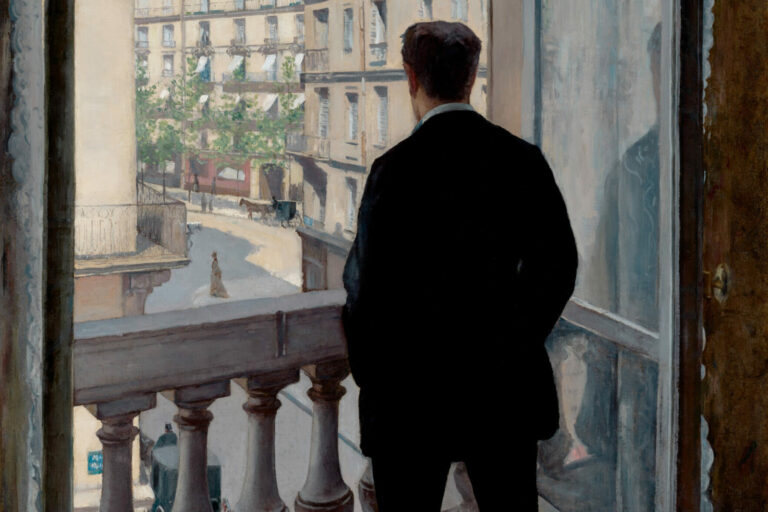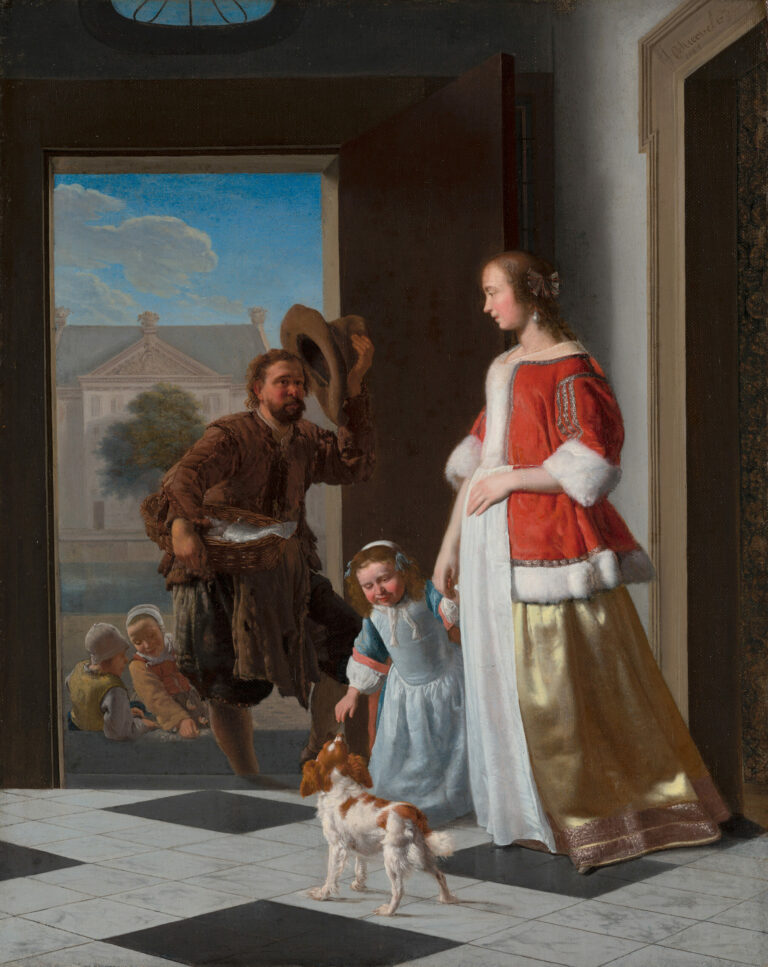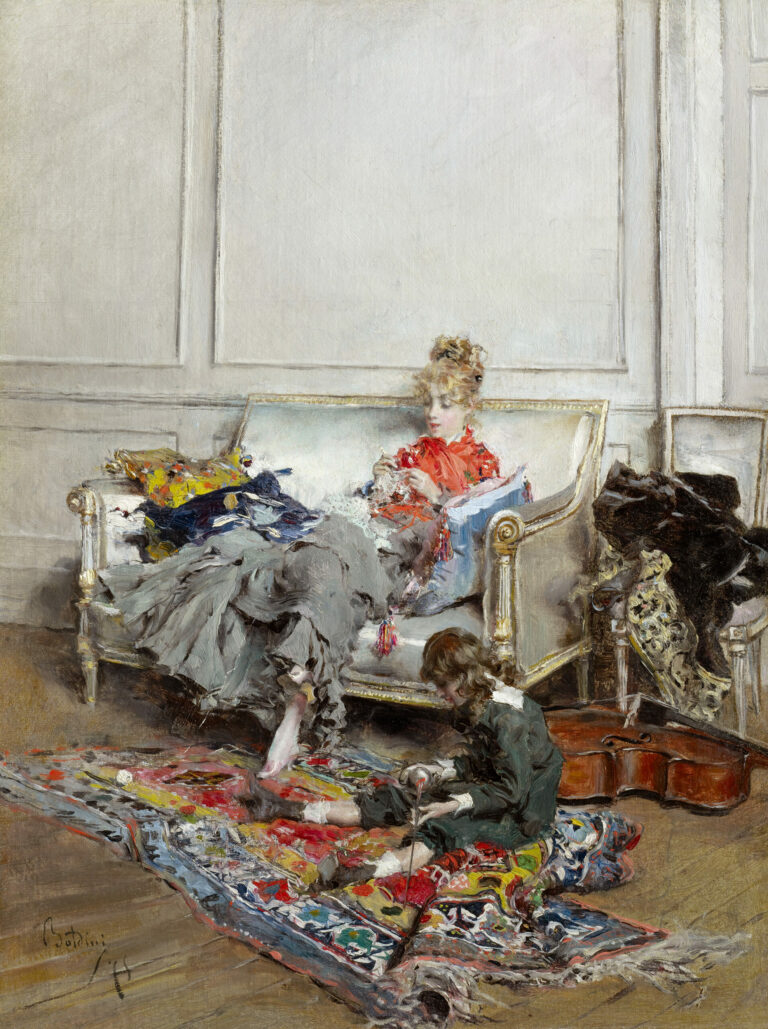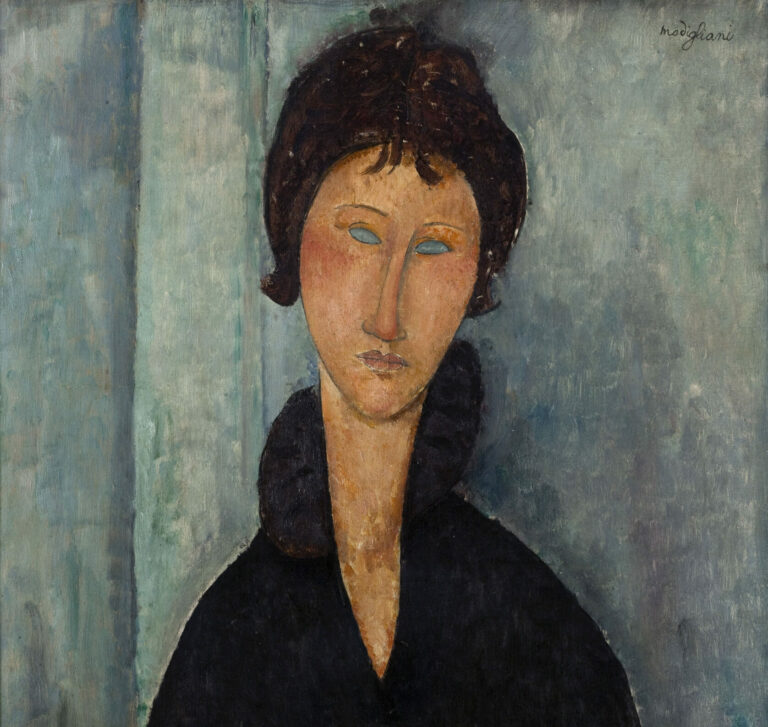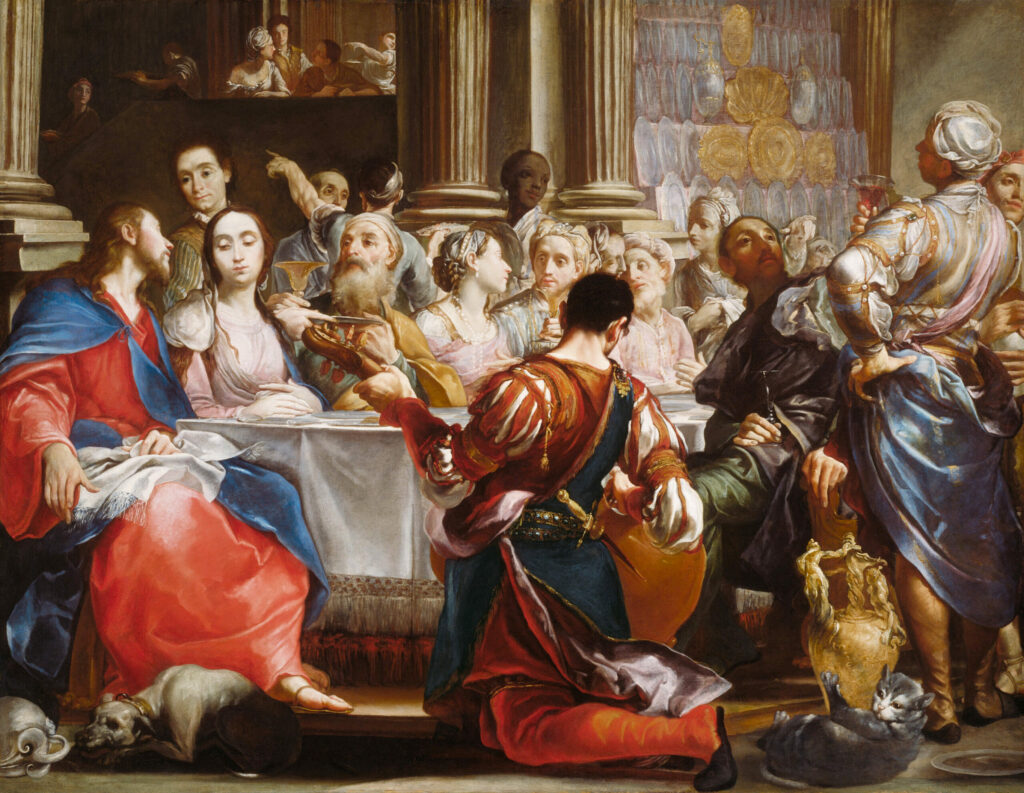
This magisterial work lavishly depicts the biblical scene of the Wedding at Cana, Christ’s first miracle. In a theatrical composition with shimmering hues, Crespi orchestrates a symphony of characters whose gazes and gestures converge toward the unfolding miracle.
On the left, dressed in red and blue, Christ engages in elegant dialogue with his mother, while on the right unfolds the moment of astonishment at the miraculous transformation of water into wine.
The sumptuous fabrics with virtuoso drapery—brilliant vermilion, deep blue, golden ochre—create a mesmerizing visual rhythm. The artist excels in representing varied expressions, from wonder to disbelief, capturing this suspended moment when the ordinary yields to the divine. The classical architecture with majestic columns frames the scene, while precious details—golden jars, animals in the foreground—testify to the technical refinement characteristic of Italian Baroque. Here, Crespi achieves the perfect fusion between Venetian grandeur and Bolognese meticulousness.
Further Information
- The Wedding at Cana, by Giuseppe Maria Crespi, circa 1686
- 188 x 248.4 cm (74 x 97 3/4 in.)
- The Art Institute of Chicago, European Painting and Sculpture, Gallery 215
- https://www.artic.edu/artworks/2166/the-wedding-at-cana
Giuseppe Maria Crespi, an emblematic figure of late Italian Baroque, forged a reputation as an innovator in the Bolognese school. Born in 1665 and died in 1747, this master of chiaroscuro was nicknamed “lo Spagnuolo” (the Spaniard). His career, marked by fierce independence from academic conventions, led him to develop a naturalistic style imbued with profound psychological sensitivity. While his religious scenes like “The Wedding at Cana” (1686) demonstrate his mastery of complex compositions, Crespi also distinguished himself in representations of everyday life.

